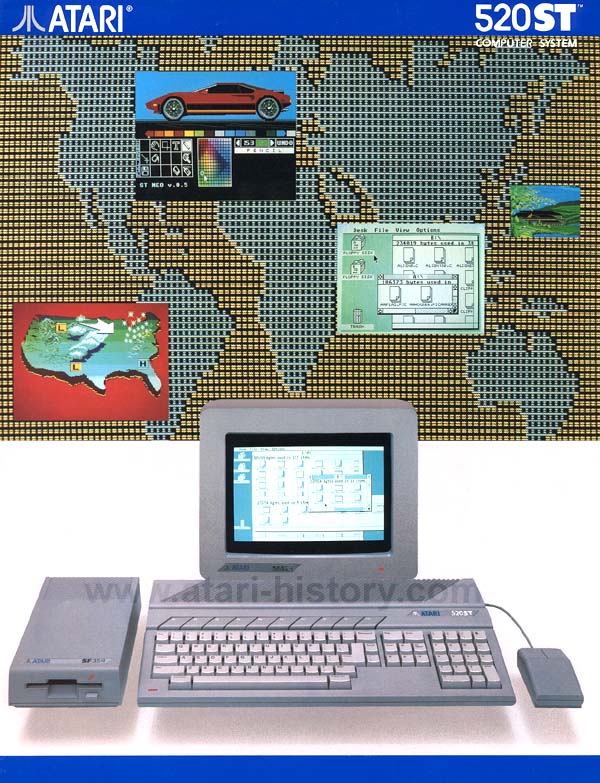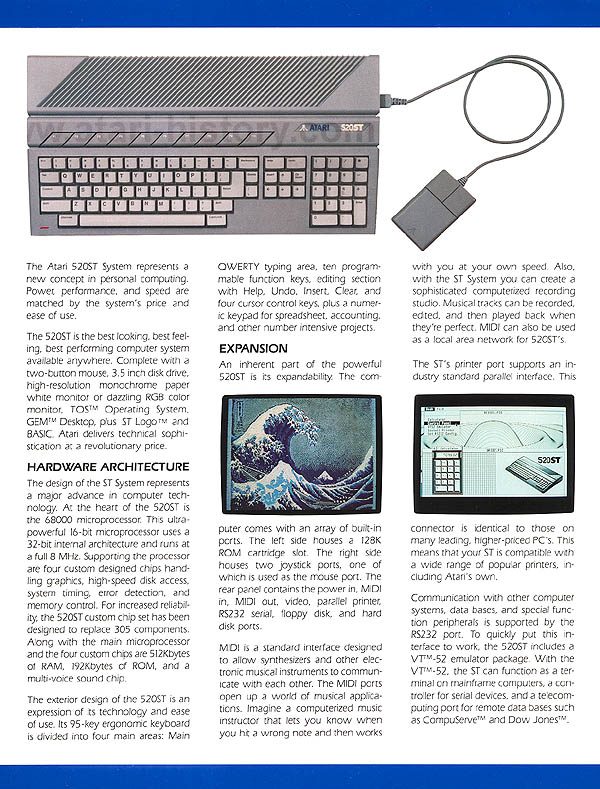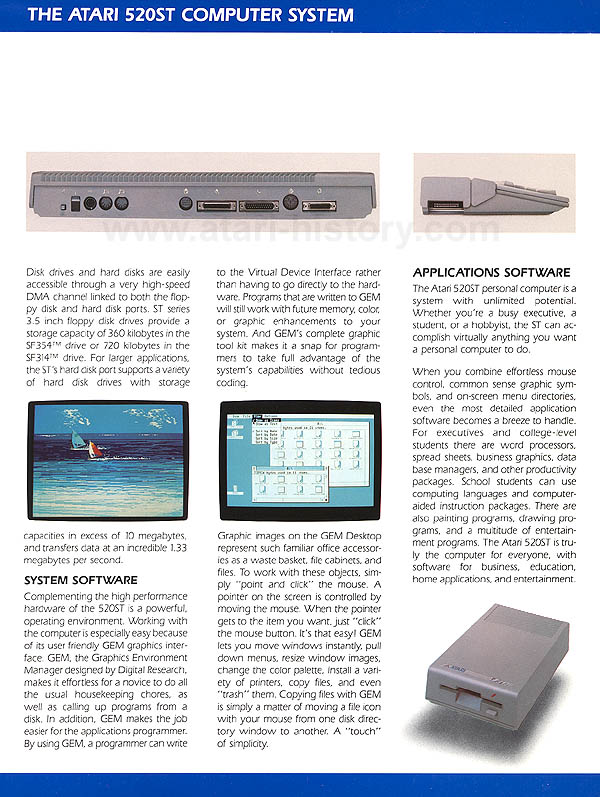

In 1985 Atari Corporation introduced its new 16-bit computer system. Called the 520ST. 520 being the memory size and ST for Sixteen/Thirty Two bit processor. The Atari ST originally had its OS delivered on floppy disk since the OS ROM's were not ready for shipping. The 520ST represents a major step forward in computer design and OS design. However many rough spots do show through and this most likely is a result of the machine being rushed market to gain a lead on the soon to be release Amiga computer system which was bought by Commodore and the money that Atari had been supplying to Amiga for development to use the technology in the Atari 1850XL computer before the Tramiels bought Atari was paid back. The ST computer utilized the Digital Research GEM interface for a graphics environment. (As an interesting note, Apple Computer sued Digital Research for the GEM "Look & Feel" on the PC version and Digital Research was forced to change it, how Apple never sued Atari or Digital for the version used on the Atari ST's. Perhaps Apple felt that the Atari ST's were not going to be a enough of a threat to merit a lawsuit.)


Technical Specifications
| Architecture
Processor
Memory
Storage
Graphics/Video
Monocrome
Color
|
User Interface
Keyboard
Mouse
Sound
Input/Output Printer
Modem
MIDI (Musical Instrument Digital Interface)
Operating System
|